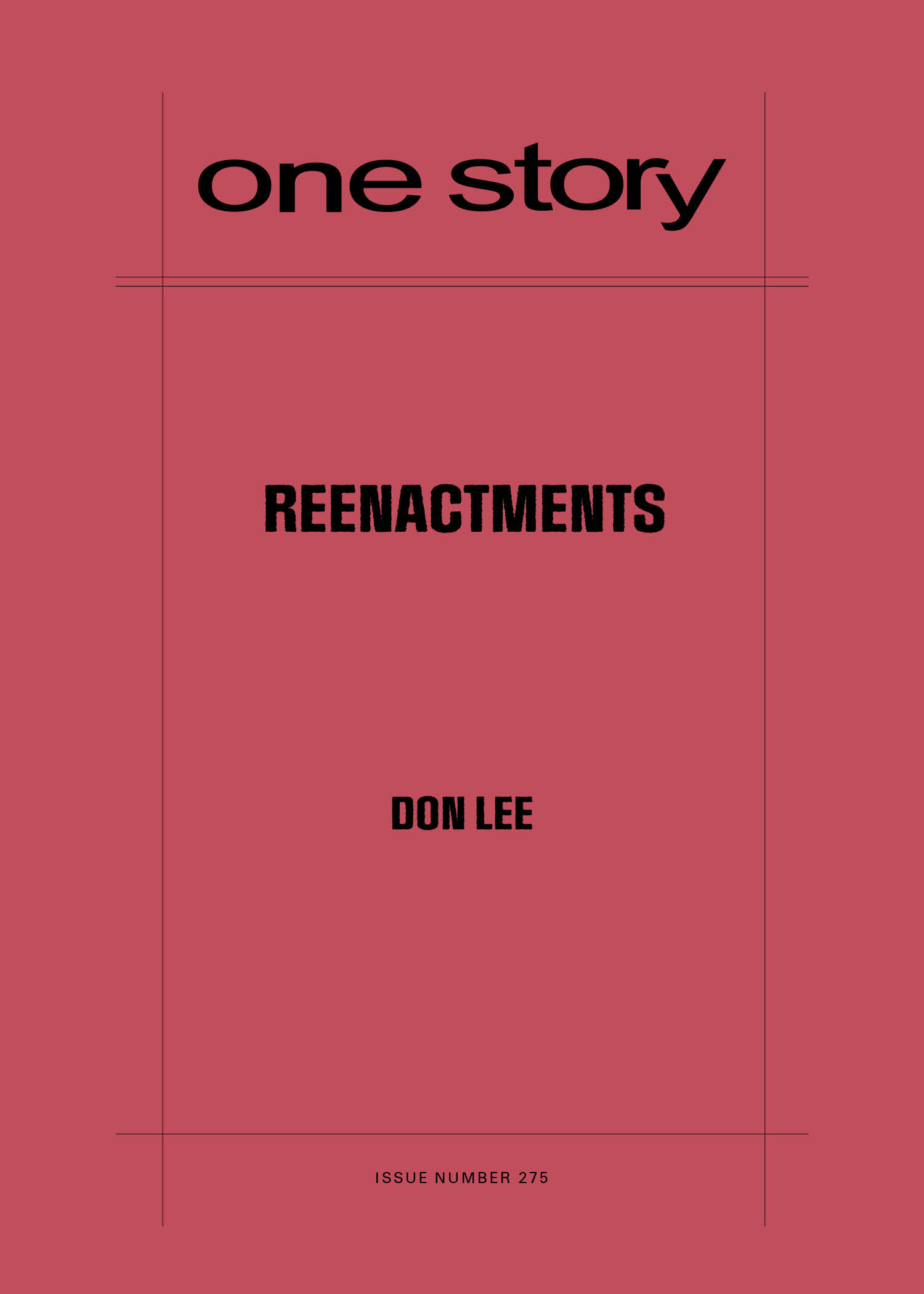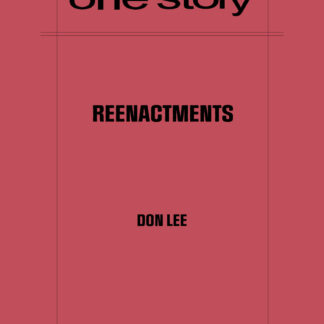
Reenactments
$2.50
34 in stock
Excerpt
The problem was all the blood. There were a lot of dead bodies sprawled about, perforated by gunshots and encrusted with immense amounts of blood, and everyone was cooking in the high desert heat, the blood attracting a slew of unwanted insects—namely, ants. Hungry ants. We were getting eaten alive out there.
We’d finished the shootout the day before—ostensibly a straightforward handover between ALEX RUDD and JESUS BELTRAN, the Mexican drug lord’s righthand man, who had been flanked by a dozen cartel henchmen. It was supposed to have been a simple exchange: the ten million in bearer bonds for “the girl” (as she was referred to in the screenplay, though the character was said to be in her late twenties). It’d been a setup, of course. Beltran had never intended to deliver “the girl.” Rudd had assumed as much and had booby-trapped the basin in the Chihuahuan Desert with M18A1 Claymore anti-personnel mines. He was an ex-Navy SEAL. He’d also hidden in strategic spots a Heckler & Koch MP5K submachine, a Benelli M3 Super 90 shotgun, and a Cobray M11/9 semi-automatic. Underneath his jacket was a SIG-Sauer P220 handgun and a crisscross of ammo bandoliers. Despite this firepower, he was outnumbered and eventually would have been dispatched if not for my intervention.
Don Lee
Don Lee is the author of the novels Lonesome Lies Before Us, The Collective, Wrack and Ruin, and Country of Origin, and the story collection Yellow. He has received an American Book Award, the Asian/Pacific American Award for Literature, and the Sue Kaufman Prize for First Fiction. He teaches in the MFA program in creative writing at Temple University and splits his time between Philadelphia and Baltimore.
Patrick Ryan on “Reenactments”
Don Lee’s “Reenactments” takes us to El Paso, Texas, where a Hollywood shoot-’em-up—a “pretty standard narco/border thriller,” as the narrator describes it—is being filmed. The on-location challenges include barking dogs, blistering heat, and fake, sugary blood that attracts fire ants. But the biggest challenge for Alain Kweon (an actor from Hawaii whose agent has convinced him to go by the professional name Alan Kwan) is a script filled with racial stereotypes, and the director who wrote it. Alain’s character, Mano Silencioso, has but a single line in the film. That line makes no sense to Alain and, worse, the director wants him to deliver it in what a fellow cast member calls “the old I-rike-flied-lice accent.” It’s the biggest role of Alain’s career thus far, so he has to make a choice: dignity, or potential success in the industry?
This story knocked my socks off for a number of reasons. For one thing, it transported me onto a film set fraught with problems (I’ve got my own problems, but they don’t involve lying on the ground for hours in full sun while bugs eat through fake blood to get at my skin). For another, Alain’s conflict is palpable—and all the more so because the story is told in his voice. The main reason I fell in love with “Reenactments,” however, is because it’s so masterfully told. Don Lee is a writer who knows how to cut to the heart of difficult subject matter in an extremely honest, realistic, and entertaining way. I was leaning forward in my chair as I neared the end, hungry to find out what was going to happen.
One Story is delighted to be putting “Reenactments” into your hands. If you aren’t yet familiar with Don Lee’s writing, a wonderful discovery awaits you. And if you have a secret dream to become a villain in a shoot-’em-up, you might want to keep that dream to yourself (or, at the very least, make sure you have some say in both the script and the ingredients for the fake blood).
Q&A by Patrick Ryan
- PR: Where did the idea for this story come from?
- DL: “Reenactments” is actually the second in a three-part story cycle with the same protagonist, covering forty-five years of his life, beginning when he’s fourteen. I’m not sure why, but while writing the first story, I decided he’d become an actor as an adult. I modeled his career after the hapa actor Russell Wong’s. Wong was in a B-movie called Romeo Must Die in 2000 with Jet Li. That led me back to another B-movie, The Replacement Killers, with Chow Yun-fat and Mira Sorvino. Then I decided I wanted to set the story in the high desert town of Marfa, Texas, where I’d spent three summers, and I re-watched No Country for Old Men, which had been filmed near there. I read an interview with the Coen brothers, who said they’d had a big problem with a desert shootout scene. The fake blood they were using had sugar in it and attracted bugs to the supposed corpses, making the actors squirm. So they had to order a special type of fake blood from England that cost $800 a gallon. The story took off from there.
- PR: What was the most challenging aspect of writing this story?
- DL: Oftentimes with stories, I’m quick to think of characters and situations, but not plots, not what the problem is, what sort of moral quandary the character is facing, what happens. That was the case here. It took me a long time to figure it out. Meanwhile, I kept doing research on the filming of action movies. I am a big aficionado of gritty action movies like the Jason Bourne and John Wick series. I re-watched a bunch of those movies, plus Heat and Sicario. I found out that all the weapons in Heat and John Wick, plus every one of Wick’s judo moves, are documented on wikis on the internet.
- PR: Were there any surprises during the writing? Another way I sometimes ask this question is, how different is the finished story from the one you originally set out to write?
- DL: Very different. Originally I was thinking that this story would have Alain teaching acting at Temple University in Philadelphia (where I teach) and being introduced to a woman from Baltimore (re how I met my wife). Then I thought I’d have him being in musical theater on a touring show. All of that got ditched.
- PR: Alain, the narrator, has changed his name from Alain Kweon to Alan Kwan at his agent’s request, and yet as an actor he’s still been regulated to “stock” Asian characters. He has a big part in his current film but only a single line, and the director wants him to deliver it in (as one of Alain’s sympathetic fellow cast members calls it) “the old I-rike-flied-lice accent.” Alain is an incredibly conflicted person with every cause for anger, and yet he doesn’t wear his anger on his sleeve. Can you talk a little about his demeanor and what’s at stake for him in this story?
- DL: The first story in this cycle with Alain is about his father, and deals with the issue of manhood—the pressure to stand up for yourself as a man. But Alain’s father doesn’t stand up for himself, and—like father, like son—neither does Alain. As nonchalant as he seems, his passivity—especially with his experiences in Hollywood—is humiliating for him. It consumes him. I wanted the question of Alain’s delivery of that line to feel to him like it would be the defining crucible of his career, and his life.
- PR: Alain lets the reader know the trajectory his career takes beyond the end of the story, but right at end, in a scene that had me at the edge of my seat the first time I read it, it’s not completely clear what he’s about to say or do. I know this was intentional on your part, so I want to ask: Without giving too much away, why did you choose to end the story exactly where you did?
- DL: Well, I love when a story has an ambiguous ending—one in which, as a reader, you first think one thing, then realize it could have been the opposite thing. I do know what Alain was trying to say, and how he was trying to say it, but I’m not going to tell.
- PR: Can you tell us a little about the title?
- DL: When I still had a cable TV subscription, I used to do a lot of channel-surfing. Once, I flipped the channel and came upon one of those air disaster shows. The docudrama portrayed a crew of Asian pilots for an Asian airline, and I wondered about the actors, who were obviously Asian Americans, reduced to appearing in these reenactments of foreign plane crashes.
- PR: How long did it take you to complete this story?
- DL: Three months, which is fast for me.
- PR: Finish this sentence in just one word—the word you think best captures it: “This story is about __________.”
- DL: Stereotypes.
- PR: What are you working on now?
- DL: I’ve just finished a story collection that includes “Reenactments,” so the focus for the moment will be shopping it around to publishers. Then I’m going to start working on a neo-noir novel.
- PR: What is the best bit of advice about writing you have ever received?
- DL: The piece of advice that would have really helped me out early on is something Willa Cather once said. This was recounted recently by Lee Issac Chung, the director/writer of the film Minari. He wrote in The Los Angeles Times: “Insecurities and missteps can plague writers and artists who come from rural places. We worry that our provincial life experiences won’t gain the approval of urban curators, so we assimilate ourselves to other, more sophisticated voices. Cather started her career by writing imitations of Henry James and Edith Wharton, novels about high society New York life that left her feeling unfulfilled...Cather began to place trust in her own experiences. She drew upon memories of life in the Great Plains and wrote a series of intensely personal works that are among the most moving novels in American literature. She said, ‘Life began for me, when I ceased to admire and began to remember.’” I’m not from a rural place, but this hits home for me, that writers should mine their memories and experiences and dig into what’s most personal to them, and write stories that are true to themselves.
